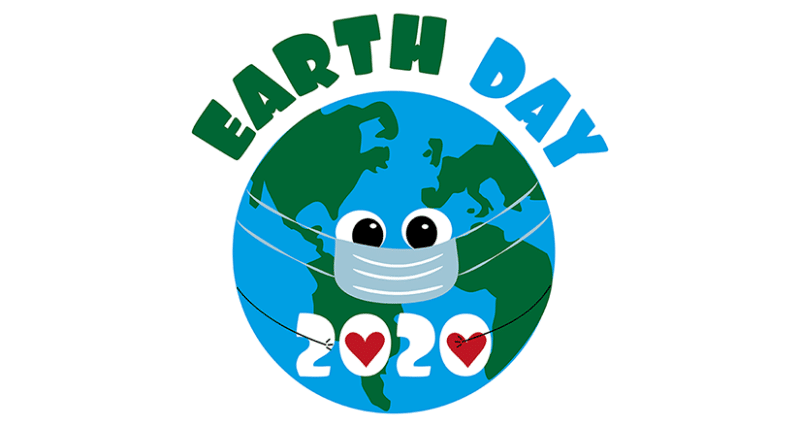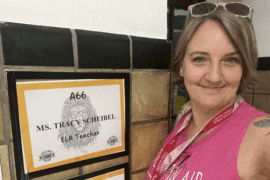Earth Day Activities and Lessons for Remote Learning
This April 22, 2020 will mark 50 years of celebrating Earth Day. April 22, 1970, was the first time that Americans stood in unified protest against the many environmental abuses that were hurting our world at that time. Organized by the Wisconsin’s Senator Nelson, the first Earth Day rallied in New York City, Chicago, and Washington DC. An environmental movement followed resulting in landmark environmental legislation in the United States and around the world, including the Clean Air Act, Water Quality Improvement Act, and Endangered Species Act, as well as the formation of the Environmental Protection Agency.
Earth Day 2020 will be different from the 49 that preceded it. Like many of our beloved annual events, we will have to celebrate Earth Day differently this year- from the safety of our homes and the distance of our online classroom. This year, we won’t work from our classrooms, we will send our students out of their homes (appropriately distanced, of course) to change their environment, and show them how to take action to change the world. Here are some ideas to fill your virtual classroom lesson plans:
Online activities:
- The National Aquarium provides kid sized environmental challenges through 48 Days of Blue, which you can use for Earth Day ideas and lessons beyond that. Check them out!
- FREE online learning games about Earth Day – some are really cute, and they include themes like greenhouse affects, oceans, recycling, and natural resources.
- Find a virtual field trip – Discovery offers many of them.
Outdoor activities/ideas:
- Have kids do a garbage sweep of their home area and record what they find. Lead an online discussion of what they found, or complete math percentages of the garbage collection. For safety reasons, I would recommend parent permission and the use of gloves before you send them anywhere.
- A neighborhood garbage clean up: have the kids keep a record of the trash that was collected and post it online for comparison.
- Ask students to plant a garden and take a picture to share online with their classmates. If plants are hard to get safely, try using seeds on hand or from online orders.
- Have students create a map of their neighborhood blocks – including the grass, treed areas, sidewalk, blacktop, and storm drains. After maps are complete, lead an online discussion about what water can and cannot do in their neighborhoods. How do certain kinds of development affect drainage and flooding, for instance?
- Keep it simple and ask students to just take a walk or hike and enjoy the beauty that is our Earth. Have them draw or paint a picture from their travels.
- Create a neighborhood nature scavenger hunt. You can focus this on flora and fauna and have them find different trees, plants, and flowers, or have them focus on environmental issues like garbage, evidence of animals (waste or prints), black top, drainage ditches, and storm sewers. Lead a discussion online about what the students found.
- Ask students to write positive Earth Day messages on a nearby sidewalk or their driveways. If students do not have chalk, have them make washable paint by using 1 cup of water, 1 cup of cornstarch, with food coloring).
At home activities/ideas:
- Recycle – Ask students to find out how their family and town handles recycling. Challenge them to come up with a better system for their home or community collections.
- Repurpose things that would have otherwise be thrown out or are no longer of use in their home. What kind of inventions or alternate uses can they come to mind?
- Clean up! Quarantines are leaving us a lot of time to clean up- but instead of throwing things out, can students plan to donate or sell any of these items?
- Journal: Have students record their own (or family’s) daily use of water. Have them consider and discuss as a class if they think they are using too much? As a class, come up with some conservation ideas.
- Challenge students to have a weekend “no TV/video games/electronics day”- Discuss how electricity gets to us- and possible energy sources used today.
Arts and crafts activities/ideas:
- Make a homemade bird feeder with recycled items such as milk cartons, toilet paper rolls or empty water bottles and help creatures of the earth. Have students hang it in their yards and take a picture to share online.
- Ask students to make a nature collage. Send them on a nature walk to collect items like pinecones, leaves, sticks, rocks, flowers, etc. Have them make a collage on construction paper, take a picture, and share it with the class.
Jessica Cicalese Kurtz is a mom of 4 and a veteran middle school engineering and science teacher at Toms River Schools. She is an experienced curriculum developer, teacher trainer, and she is a regular contributing writer for The Plymouth Rock Teachers’ Lounge.





